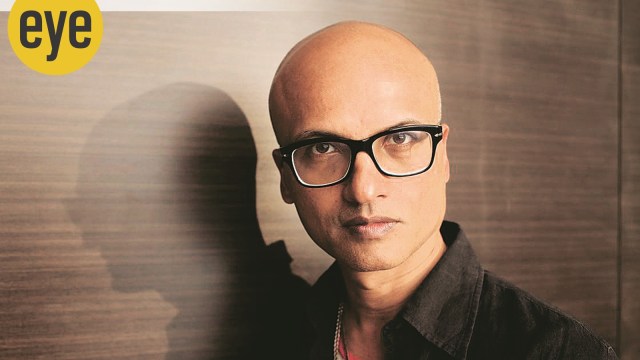Jeet Thayil’s latest poetry collection explores the search for hope in broken societies
The imagery in the anthology is often sharp and grotesque. Thayil paints characters in ways that underscore their toxicity and need for survival in a flawed world.
 The first part of the book, like much of Thayil's oeuvre, presents a fragmented examination of the self, often in urban landscapes that are decaying or dying
The first part of the book, like much of Thayil's oeuvre, presents a fragmented examination of the self, often in urban landscapes that are decaying or dyingCouplets that rhyme with ‘Make in India’ while critiquing contemporary life in India; hallucinatory descriptions of childbirth and a dead mother; quatrains on the agony of being separated from the love of your life. These are specimens from Jeet Thayil’s latest poetry anthology, I’ll Have It Here, that blends the real with the absurd, explores how love and death walk hand-in-hand in modern life, and delves into what happens when the past haunts and the future irks.
The first part of the book, like much of Thayil’s oeuvre, presents a fragmented examination of the self, often in urban landscapes that are decaying or dying. Diverse themes like addiction, camaraderie, fractured identity in marginalized communities, the gritty life of cities like New York, are explored.
The second part, wherein Thayil looks outward, enthralls a reader of fiction and non-fiction too. From empathising with the workers ignored by the Indian government during the COVID pandemic to looking at the violent transformation of the country in the last decade, all the way to empathising with a bird about to go extinct, the narrator takes us everywhere.
In the third part, the narrator looks around in search of hope and love — the verses become softer, about somebody who lies in unending wait. The narrator’s voice is the single most important feature of Thayil’s poems. He/she is sometimes omniscient and/or first-person, sometimes both. He/she acts as an interlocutor between the reader’s brain and heart — connecting the feelings ignited while reading with afterthoughts.
 From Lutyens Delhi to London to Budapest to New York, Thayil describes place so that meaning is elusive and alienation is pervasive
From Lutyens Delhi to London to Budapest to New York, Thayil describes place so that meaning is elusive and alienation is pervasive
Thayil also makes it a point to make his style and form as fresh as possible. A reader is curious to turn a page to see what kind of verse is next, rhyming couplets, broken verses or sweet, old, free verses.
The imagery in the anthology is often sharp and grotesque. Thayil paints characters in ways that underscore their toxicity and need for survival in a flawed world. From Gandhi appearing (or reincarnating) as a gecko on the wall to ultra-modern futuristic drones that kill people almost intentionally; the contrasting images constantly keep the reader in awe.
Contrasts don’t stop with the imagery. The locations in the poems, be they across the globe or in your nearby alleyway, serve as metaphors for an existential void. From Lutyens Delhi to London to Budapest to New York, Thayil describes place so that meaning is elusive and alienation is pervasive. He doesn’t limit his gaze to grand cosmopolitan streets; even indoor settings take the reader for a ride. From the aforementioned gory delivery room to a casual drawing room where a suicide likely took place, he takes us literally everywhere.
If the idea that poets are seers is true, a reader would want at least a few of Thayil’s visions to go wrong. For he sees a futuristic India where brother kills brother and wins a war — a cycle of time that connects any war in the future with one in mythological epics like the Mahabharata. For he sees a world where birds have gotten the news that “we,” humans, “kill for joy and die, burning down the house.”
Photos





- 01
- 02
- 03
- 04
- 05


























